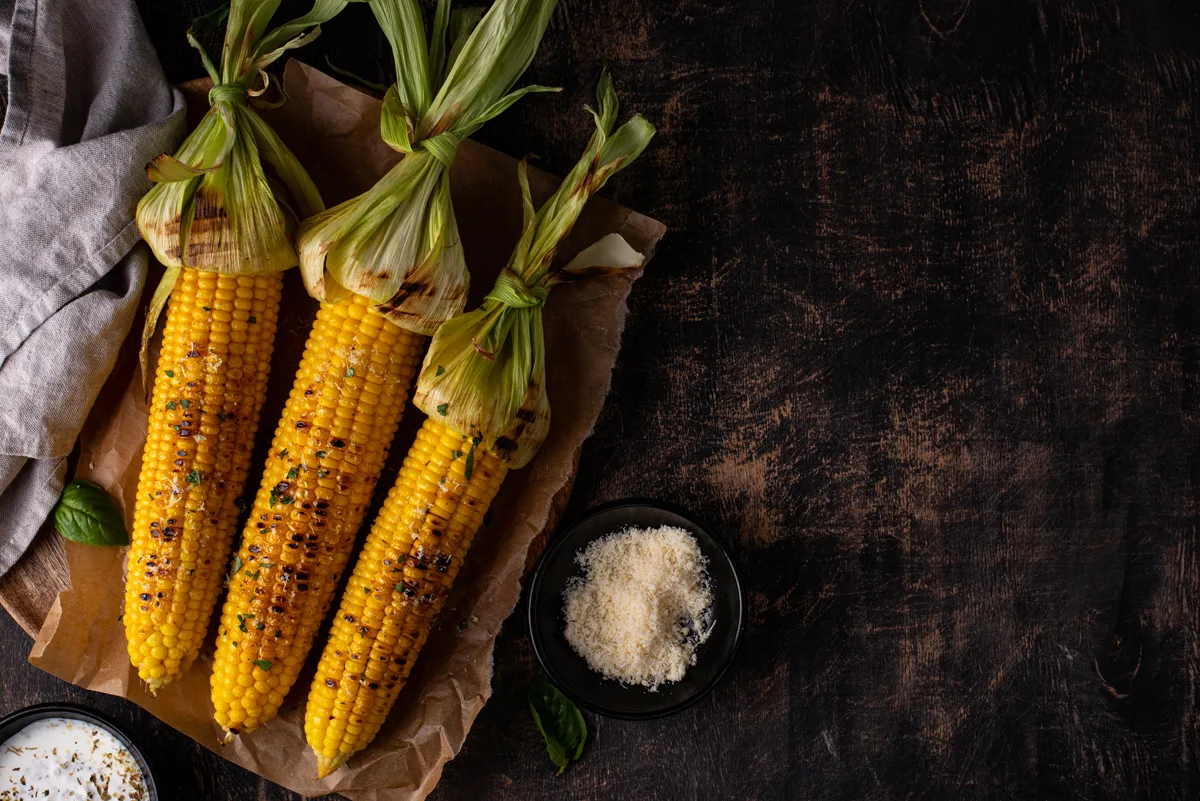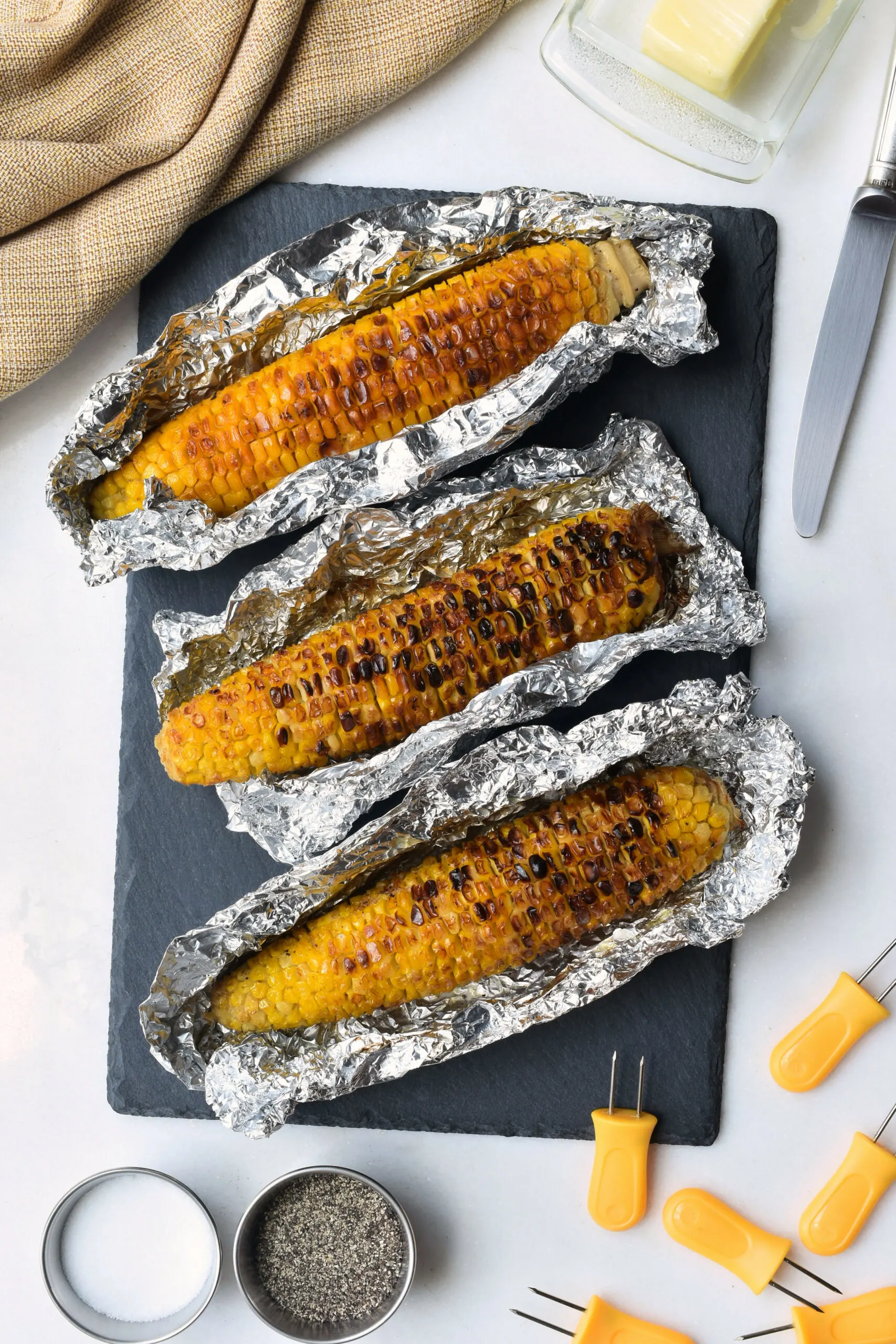When summer rolls around, it’s time to fire up your natural gas grill or kamado grill to grill corn on the cob.
Whether you are grilling or reheating corn on the cob, knowing how to tell if corn on the cob is bad is essential.
Contents
How Long Can Corn on the Cob Last?
Just like we can overestimate how much meat per person, we can overestimate how much corn per person.
The truth is, even if you and your family are corn enthusiasts, it is likely you will end up with a few leftover ears of corn on the cob.
Instead of throwing that delicious corn in the trash, you can store it in the refrigerator.
Wrap your corn tightly to help keep it fresh and store it in a part of the fridge where other foods cannot hide it.
Raw corn on the cob has a shelf life of 3 days in the refrigerator, while cooked corn will last for 5 days.
How Long Does Unshucked Corn on the Cob Last?
Like a tomahawk steakis best eaten fresh, unshucked corn is best used within 24 hours after you bought it.
Nevertheless, unshucked corn will last 5 days in the fridge as long as it is stored properly.
How Long Is Frozen Corn Good For?
Freezing cooked corn will extend its shelf life for a long time. When stored correctly in the freezer, corn can last up to one year in the freezer.
However, it is best to eat your frozen corn before the 8-month mark as its quality and flavor can decline after some time.
What Happens if You Eat Bad Corn?
As mad as you may be about wasting food and money by throwing out bad corn, your stomach will be just as angry at you if you eat bad corn.
As a result, you can expect to catch a case of food poisoning by eating spoiled corn.
This means you will most likely experience diarrhea, vomiting, nausea, and abdominal pain.
While most foodborne illness cases do not result in a doctor’s visit, it is best to seek medical treatment from a professional if symptoms persist.

How To Tell if Corn on the Cob Is Bad
Because of its delicious sweet flavor, corn on the cob represents a significant part of our diet.
Even though most of us have had pleasant experiences with corn, it only takes one experience with spoiled corn to ruin it.
This is why you must know how to tell if corn is bad.
How To Tell if Raw Corn on the Cob Is Bad
Many people buy corn without knowing it is spoiled. Unfortunately, they will not know it is rotten corn until they have tasted it.
Luckily there are several ways to tell if raw corn on bad.
Husks
The most apparent sign that raw corn on the cob is spoiled is the leaves. If the lower leaves on the ar of corn have long grey spots, this is also a sign of spoilage.
If the corn has wrinkled, torn, or has a high yellow color, they are spoiled and should not be purchased.
Fresh corn has green husks and pale yellow silk. Brown husks indicate that the corn has mold and should be avoided at all costs.
Grains and Weight
If the grains on the corn are less than 75-80%, this means the grains are not well-nourished, and the corn is spoiled.
In addition to this, if the corn on the cob is light as a feather, the corn is rotten. An average ear of corn weighs at least 0.5 lbs anything less is unacceptable.
Black Spots
You can also use the stem to determine if the corn is good or bad. An indication that the stems are rotting is black spots at the base of the grains.
It is best to leave corn with black dots where it is because it will be of no use to you.
How To Tell if Cooked Corn on the Cob Is Bad
Knowing if cooked corn is good is just as important as knowing if raw corn is bad.
Knowing if cooked corn is good or bad can be a bit trickier as they do not always have an expiration date.
In addition to this, the corn may not have any signs of spoilage. Therefore, it is best to perform all 3 tests to tell if your cooked corn is bad.
Appearance
The most apparent sign that corn is rotten is its appearance. Fresh corn has a golden yellow color.
If there are black or brown spots or mold on the corn, do not consume.
Even though the entire ear of corn may not be infected, do not cut off the rotten piece and consume the seemly good part of the corn. T
he corn may still be tainted by mold and could make you sick.
Smell
Do not consume corn with an unpleasant odor. Remember, the nose was designed to protect you from spoiled foods.
When corn is rotten, it gives off a potent rancid smell that makes your face pucker up in disgust, throw it away.
Touch
Just like the nose alerts you when corn smells off, your fingers can alert you when corn on the cob feels off just by touching the corn.
Fresh corn should be firm and rough. You should feel the bumps and ridges of the kernels when you touch the ear of corn.
In contrast, if the corn feels slimy, throw it away. This indicates that fungus or mold has begun to develop, which means the corn is spoiled.
Final Thoughts
It is easy to forget about corn on the cob when a stack of food hides it.
Therefore, knowing how to tell if corn on the cob is bad is crucial as it will protect you from eating spoiled corn that has an unpleasant flavor.
It will also save you from contracting food poisoning.
Remember to depend on your senses when determining if corn on the cob is bad!
You might also be interested in:
- How To Tell If a Hamburger Is Bad
- How To Tell If Shrimp Is Bad
- How To Tell If Salmon Is Bad
- How To Tell If Lobster Is Bad
- How To Tell If Fish Is Bad
- How To Tell If Eggplant Is Bad

I have been smoking and grilling meat from an early age and enjoy sharing my knowledge and expertise through the hundreds of articles I have written about BBQ. I hope to make everyone’s BBQ journey that little bit easier.

